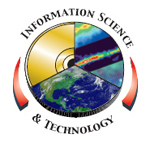
Please Note: The content on this page is not maintained after the colloquium event is completed. As such, some links may no longer be functional.
Mike Little 
AIST Managed Cloud Environment (AMCE) – Demonstrating Cloud Access for GSFC
Wednesday, November 29, 2017
Bldg. 36 / Room C211 - 11:00 AM
(Cookies available at 10:30 AM)
Over 10 years ago, JPL’s Tom Soderstrom implemented a partnership with Amazon Web Services (AWS) to provide public cloud computing to JPL. The NASA Nebula project, hosted at Ames and Goddard, introduced cloud computing to the rest of NASA. Michael Little, in the Science Mission Directorate, lead an evaluation of Nebula’s capability, in an effort to offload some of the demand from the supercomputing sites, also at Goddard and Ames. This evaluation revealed both strengths and weaknesses in Nebula and cloud computing, in general. Specifically, the value of high capacity, pay-as-you-go public cloud computing to support research became clear. However, subsequent attempts to provide a robust, easy to use interface to AWS proved difficult. Three years ago, Mike Little, managing the Science Mission Directorate’s Advanced Information Systems Technology (AIST) Program, recognized the value and the need to demonstrate and implement an effective means of using public cloud computing for scientific research investigations. After a few months of conceptual design and experiments, Mike’s team at SGT developed a functional system and initiated the appropriate computer security authorization request. A Low Authorization to Operate was granted in August, 2016 and AIST users began to migrate their projects onto the system. Users at Goddard and Langley quickly followed up with subscriptions until today there a dozen projects throughout SMD and NASA HQs using AMCE to take advantage of public cloud computing.
Mike Little has run the Earth Science Technology Office’s Advanced Information Systems Technology (AIST) Program for over three years, including two separate competitive solicitations for technologies needed in Earth Science in the 5-20 year timeframe. While maintaining his sense of humor, he has worked to strengthen the adoption rate of the technologies developed and to identify integrations of those technologies into capabilities needed by the science community. Mike recognized the need to demonstrate, effectively, the value of such technologies to encourage adoption within NASA; Cloud Computing and GIS being two of those demonstrations leading to more widespread adoption. His experience managing the evaluation of NASA’s Nebula project provided a rich field of lessons learned and insight into the value and minimum success criteria that were used in the AMCE demonstration, including both the computer security and business model requirements. Mike also recognized that the AMCE demonstrator needed to make the transition to an operational state and found a similar recognition in Dan Duffy at the NCCS (GSFC Code 606), who has now taken over the operational responsibility for the system. Mike previously worked at the Langley DAAC, the CERES Program, the Langley OCIO and earlier in NASA HQ Code R, the USAF Consolidated Space Operations Center (Comm Segment), and various USMC and US Navy system acquisition programs. His undergraduate degree in Physics earned him an interview with Admiral Rickover and four years of submarine duty in the US Navy Nuclear Propulsion Program.
IS&T Colloquium Committee Host: Keith Keller
Sign language interpreter upon request: GSFC-Disability-Programs@mail.nasa.gov(link sends e-mail) or (301) 286-7348.
